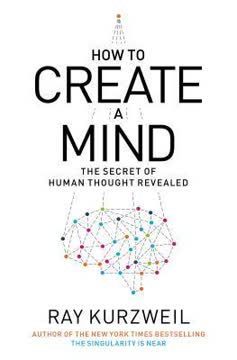Key Takeaways
1. The human brain is a pattern recognition machine
The brain is a tissue. It is a complicated, intricately woven tissue, like nothing else we know of in the universe, but it is composed of cells, as any tissue is.
Pattern recognition is fundamental. The human brain excels at recognizing patterns in complex data, from visual and auditory inputs to abstract concepts. This ability allows us to make sense of the world, learn from experiences, and predict future events.
Hierarchical structure. The brain's pattern recognition operates in a hierarchical manner, with lower levels processing simple patterns and higher levels combining these into more complex and abstract patterns. This hierarchical structure enables the brain to efficiently process vast amounts of information and extract meaningful insights.
- Lower-level patterns: Basic shapes, colors, sounds
- Mid-level patterns: Objects, words, melodies
- Higher-level patterns: Concepts, ideas, theories
Redundancy and plasticity. The brain's pattern recognition system is highly redundant, with multiple copies of important patterns stored across neural networks. This redundancy allows for robust recognition even when input is partial or distorted. Additionally, the brain's plasticity enables it to continually refine and update its pattern recognition capabilities based on new experiences and learning.
2. Neocortex is the key to human intelligence
The neocortex is responsible for sensory perception, recognition of everything from visual objects to abstract concepts, controlling movement, reasoning from spatial orientation to rational thought, and language—basically, what we regard as "thinking."
Neocortex structure. The neocortex is a thin, six-layered structure that covers the surface of the brain. It is organized into columns, each containing about 60,000 neurons, with an estimated total of 300 million pattern recognizers in the human neocortex.
Information processing. The neocortex processes information through its hierarchical structure of pattern recognizers. Each recognizer receives input from lower levels, recognizes specific patterns, and sends output to higher levels. This process allows for increasingly abstract and complex pattern recognition as information moves up the hierarchy.
- Input processing: Sensory data enters lower levels
- Pattern matching: Recognizers compare input to stored patterns
- Hierarchical integration: Higher levels combine lower-level patterns
- Output generation: Recognized patterns trigger actions or thoughts
Plasticity and learning. The neocortex's ability to rewire itself based on experience is crucial for learning and adapting to new situations. This plasticity allows humans to acquire new skills, form memories, and update their understanding of the world throughout their lives.
3. The brain operates on hierarchical structures
The brain is not like a computer, with billions of identical transistors in regular memory arrays that are controlled by a CPU with a few different elements. In the brain every individual structure and neural circuit has been individually refined by evolution and environmental factors.
Hierarchical organization. The brain's hierarchical structure is evident in its physical organization and information processing. This hierarchy allows for efficient processing of complex information by breaking it down into simpler components at lower levels and integrating them at higher levels.
Information flow. Information in the brain flows both up and down the hierarchy. Upward flow allows for increasingly abstract pattern recognition, while downward flow enables predictions and context-based interpretation of lower-level inputs.
- Bottom-up processing: Sensory input → Pattern recognition → Abstract concepts
- Top-down processing: Expectations → Context → Interpretation of sensory data
Evolutionary advantage. The hierarchical structure of the brain, particularly the neocortex, provides a significant evolutionary advantage. It allows for rapid learning and adaptation to new situations, enabling humans to quickly develop and share new skills and knowledge across populations.
4. Artificial intelligence is approaching human-level capabilities
Watson's ability to intelligently master the knowledge in natural-language documents is coming to a search engine near you, and soon.
AI advancements. Recent developments in artificial intelligence, such as IBM's Watson and Google's deep learning systems, demonstrate rapidly advancing capabilities in natural language processing, pattern recognition, and problem-solving.
Biologically inspired AI. Many successful AI approaches, such as neural networks and deep learning, are inspired by the structure and function of the human brain. These approaches leverage hierarchical pattern recognition and learning algorithms that mimic biological processes.
- Neural networks: Artificial neurons connected in layers
- Deep learning: Multiple layers of neural networks for complex pattern recognition
- Natural language processing: AI systems that can understand and generate human language
Potential and limitations. While AI systems have achieved impressive results in specific domains, they still lack the general intelligence and flexibility of the human brain. However, the rapid pace of AI development suggests that human-level artificial general intelligence may be achievable in the coming decades.
5. Consciousness and free will remain philosophical puzzles
Consciousness can reduce even the most fastidious thinker to blabbering incoherence.
Defining consciousness. Despite significant advances in neuroscience and AI, the nature of consciousness remains a subject of intense philosophical debate. Theories range from emergent properties of complex systems to fundamental aspects of the universe.
Free will debate. The question of whether humans have free will or if our decisions are predetermined by prior causes is closely linked to the problem of consciousness. Neuroscientific findings suggesting that decisions are made before we become consciously aware of them have further complicated this debate.
- Compatibilism: Free will is compatible with determinism
- Libertarianism: Free will exists independently of causal determinism
- Hard determinism: All events, including human decisions, are caused by prior events
Implications for AI. As AI systems become more advanced, questions about machine consciousness and the ethical implications of creating potentially conscious artificial beings become increasingly relevant.
6. Technological evolution is outpacing biological evolution
We are creating these tools to make ourselves smarter.
Accelerating returns. The pace of technological development is exponential, with each generation of technology being used to create the next. This leads to a rapid acceleration in technological capabilities that far outpaces biological evolution.
Merging with technology. As technology becomes more advanced and integrated into our lives, the line between human and machine intelligence is blurring. Many people already consider their smartphones and other devices as extensions of their minds.
- Brain-computer interfaces: Direct connections between brains and computers
- Nanotech and biotech: Technologies that can enhance and modify biological systems
- Artificial general intelligence: AI systems that match or exceed human intelligence
Ethical considerations. The rapid pace of technological evolution raises important ethical questions about the future of humanity, including issues of inequality, identity, and the potential risks of advanced AI systems.
7. The future of intelligence is a merger of human and machine
We will merge with the intelligent technology we are creating.
Enhancing human intelligence. Future technologies may allow for direct enhancement of human cognitive capabilities through brain-computer interfaces, genetic engineering, and other advanced technologies.
AI integration. As AI systems become more advanced, they are likely to be integrated more deeply into human society and individual lives, serving as cognitive assistants and partners rather than separate entities.
- Cognitive enhancement: Technologies that boost memory, learning, and problem-solving
- Seamless interfaces: Direct neural connections to AI systems and the internet
- Hybrid intelligence: Collaborative problem-solving between humans and AI
Philosophical implications. The merger of human and machine intelligence raises profound questions about the nature of consciousness, identity, and what it means to be human in a world where the boundaries between biological and artificial intelligence are increasingly blurred.
Human anatomy.png
Last updated:
FAQ
What's How to Create a Mind about?
- Exploration of Thought: The book explores the nature of human thought and consciousness, offering a theory on how the brain processes information.
- Pattern Recognition Theory: Ray Kurzweil introduces the Pattern Recognition Theory of Mind (PRTM), suggesting the neocortex functions as a hierarchical system of pattern recognizers.
- AI Insights: It discusses how understanding the brain can lead to advancements in artificial intelligence, proposing that machines can emulate human thought processes.
Why should I read How to Create a Mind?
- Consciousness and AI: If you're intrigued by consciousness and its connection to AI, this book offers a unique perspective.
- Innovative Synthesis: Kurzweil combines ideas from various fields, making complex concepts accessible and engaging.
- Future Implications: The book discusses AI's societal impact and future, relevant for anyone interested in technology's role in humanity.
What are the key takeaways of How to Create a Mind?
- Neocortex Functionality: The neocortex is crucial for perception and critical thinking, operating through hierarchical pattern recognition.
- Accelerating Returns: Kurzweil highlights that technological evolution accelerates, leading to exponential growth, especially in AI.
- Biological-Digital Integration: The potential for a digital neocortex could enhance human intelligence and capabilities.
What is the Pattern Recognition Theory of Mind (PRTM) in How to Create a Mind?
- Core Concept: PRTM suggests the neocortex functions as interconnected pattern recognizers processing information hierarchically.
- Hierarchical Learning: Each recognizer learns from experiences, recognizing complex patterns from simpler ones.
- AI Framework: This theory provides a framework for developing AI systems that mimic human cognitive processes.
How does Kurzweil describe the structure of the neocortex in How to Create a Mind?
- Layered Organization: The neocortex has six layers, each with specific functions, with layers II and III projecting to other neocortex parts.
- Columnar Structure: The cortical column is the neocortex's basic unit, containing numerous pattern recognizers for processing information.
- Uniformity Across Regions: Despite diverse functions, the neocortex's fundamental structure is consistent across regions.
How does Kurzweil connect AI and human intelligence in How to Create a Mind?
- Biological Inspiration: Understanding the human brain can lead to advanced AI systems replicating human thought processes.
- Digital Neocortex Concept: Kurzweil envisions a future with a digital neocortex enhancing human intelligence and capabilities.
- Exponential AI Growth: As AI evolves, it will increasingly mirror human cognitive functions, leading to societal changes.
What are the best quotes from How to Create a Mind and what do they mean?
- "The Brain is just the weight of God": Highlights the brain's complexity and significance in understanding consciousness.
- "Identity lies not in our genes, but in the connections between our brain cells": Emphasizes neural connections' role in shaping identity and experiences.
- "The operating principle of the neocortex is arguably the most important idea in the world": Underscores the neocortex's central role in human thought and creativity.
How does Kurzweil define consciousness in How to Create a Mind?
- Subjective Experience: Consciousness is a subjective experience arising from complex neural processes.
- Emergent Property: It's an emergent property of a complex system, suggesting potential creation in non-biological systems.
- Philosophical Implications: Explores whether machines can truly be conscious, arguing that convincing replication of human behavior equates to consciousness.
What role does the Law of Accelerating Returns play in How to Create a Mind?
- Exponential Growth: Technological progress, especially in IT, follows an exponential trajectory.
- AI Development Impact: As technology improves, innovation accelerates, leading to AI breakthroughs.
- Future Predictions: This law underpins Kurzweil's predictions about technology's future and its integration into human life.
How does Kurzweil address objections to his theories in How to Create a Mind?
- Criticism from Incredulity: Many objections stem from a linear understanding of technology, overlooking exponential progress.
- Brain Complexity: Emphasizes that understanding the brain's fundamental principles is achievable, facilitating reverse-engineering.
- AI Limitations: Highlights advancements in AI, asserting that systems are becoming increasingly capable.
What is the significance of the brain's plasticity in How to Create a Mind?
- Adaptability: Plasticity allows the brain to adapt and learn from experiences, crucial for intelligent systems.
- AI Implications: Understanding plasticity can inform AI design, leading to more robust and flexible machines.
- Learning and Memory: Plasticity is essential for learning and memory, enhancing cognitive capabilities in machines.
How does How to Create a Mind envision the future of human and machine intelligence?
- Merging of Intelligences: Predicts a future where human and machine intelligence merge, enhancing cognitive abilities.
- Ethical Considerations: Raises questions about creating conscious machines and their societal implications.
- Transcendence of Limitations: Envisions technology transcending human limitations, enhancing knowledge and creativity.
Review Summary
How to Create a Mind presents Kurzweil's Pattern Recognition Theory of Mind, arguing that the brain functions through hierarchical pattern recognition. Kurzweil proposes this model can be replicated in AI, potentially leading to human-level artificial intelligence. The book covers neuroscience, AI development, and philosophical questions about consciousness and identity. Reviews are mixed, with some praising its thought-provoking ideas and others criticizing its repetitiveness and lack of depth in certain areas. Many readers find it accessible and interesting, though some question Kurzweil's more speculative claims.
Similar Books
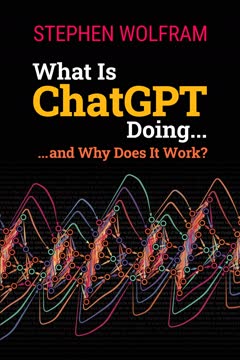




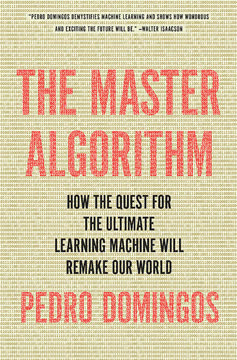

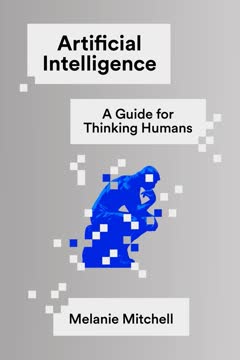
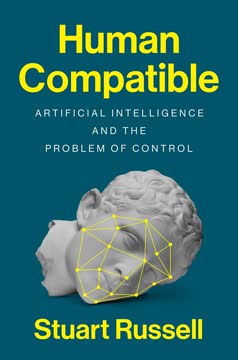

Download PDF
Download EPUB
.epub digital book format is ideal for reading ebooks on phones, tablets, and e-readers.
